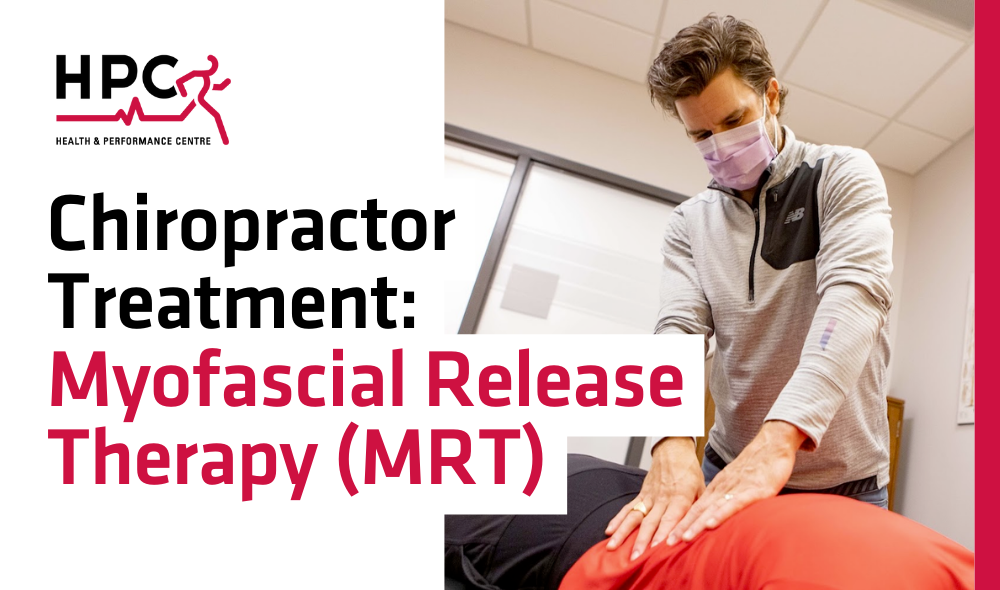Enhance Chiropractic Treatment with Myofascial Release Therapy (MRT)

Chiropractic care is about more than just being adjusted and that familiar "cracking: sound. While adjustments are a fundamental aspect of chiropractic treatment, chiropractic care encompasses much more than that. Often, your chiropractor will also treat an injury through acupuncture, Instrument Assisted Soft Tissue Mobilization (IASTM), and myofascial release, a technique which we'll focus on in this article.
Myofascial Release Therapy (MRT) is a technique that allows a practitioner to diagnose and manually treat soft-tissue injuries. The purpose of MRT is to release the myofascial tissue to relieve the body of soft tissue tension and/or scar tissue, which may restrict blood flow and nerve function and is common in both new and older injuries. Each injury may be resolved quickly and permanently with MRT.
Book an Appointment
Learn How HPC Can Help
How Does Myofascial Release Therapy (MRT) Work?
Myofascial Release Therapy (MRT) is a manual therapy technique that focuses on releasing tension and restrictions within the fascia, a connective tissue that surrounds and supports muscles, bones, and organs throughout the body. When used in a chiropractic setting, MRT can complement and enhance the overall treatment approach.
Here's how it works:
- Identifying Fascial Tension and Restrictions: Our skilled chiropractors at the Health and Performance Centre (HPC) in Guelph utilize MRT to identify and target areas of fascial tension, adhesions, and restrictions. Through thorough assessments involving palpation, movement analysis, and detailed patient history, chiropractors pinpoint problematic areas.
- Application of Targeted Pressure and Stretching Techniques: Our chiropractors employ hands-on techniques or specialized tools to apply precise pressure and stretching to the affected areas. These methods release tension, alleviate restrictions, and enhance tissue mobility and flexibility.
- Facilitating Fascial Release: By skillfully utilizing MRT techniques, our chiropractors expertly release fascial restrictions, allowing for improved tissue function and reduced discomfort associated with restricted movement.
- Integration with Chiropractic Adjustments: Integrating MRT with chiropractic adjustments yields exceptional outcomes. As fascial restrictions are released, adjustments become more effective in restoring joint mobility, alignment, and overall musculoskeletal balance.
- Patient Education and Self-Care: Chiropractors employing MRT educate patients about the significance of self-care. They guide individuals in performing stretching exercises, employing foam rollers, or utilizing specific tools for self-myofascial release, ensuring continued benefits and proactive management.
What Can I Expect from MRT?
Since this technique is highly specific to each tissue injury, treatment sessions take approximately 10-15 minutes and patients can improve in as few as two sessions.
Does MRT Hurt?
MRT is a non-invasive treatment proven to be both safe and effective. Symptoms are often more noticeable during treatment, an indication that the problem tissue has been identified; however, they usually subside within minutes after treatment.
Is MRT For You?
Yes. MRT is suitable for anyone who is experiencing common problems such as:
- headaches
- back pain
- carpal tunnel syndrome
- shin splints
- shoulder pain
- sciatica
- foot pain
- knee problems
- tennis elbow and many other soft tissue injuries
The fusion of chiropractic adjustments and myofascial release therapy creates a comprehensive approach that addresses a wide range of musculoskeletal concerns. This combined strategy optimizes movement, diminishes pain, and supports enduring musculoskeletal well-being.
It's important to remember that the specific application and techniques of MRT may vary among chiropractors, as each professional applies their unique training, experience, and individualized patient-centered approach. Call the clinic at 519-767-5011 or speak to your HPC chiropractor for more information.